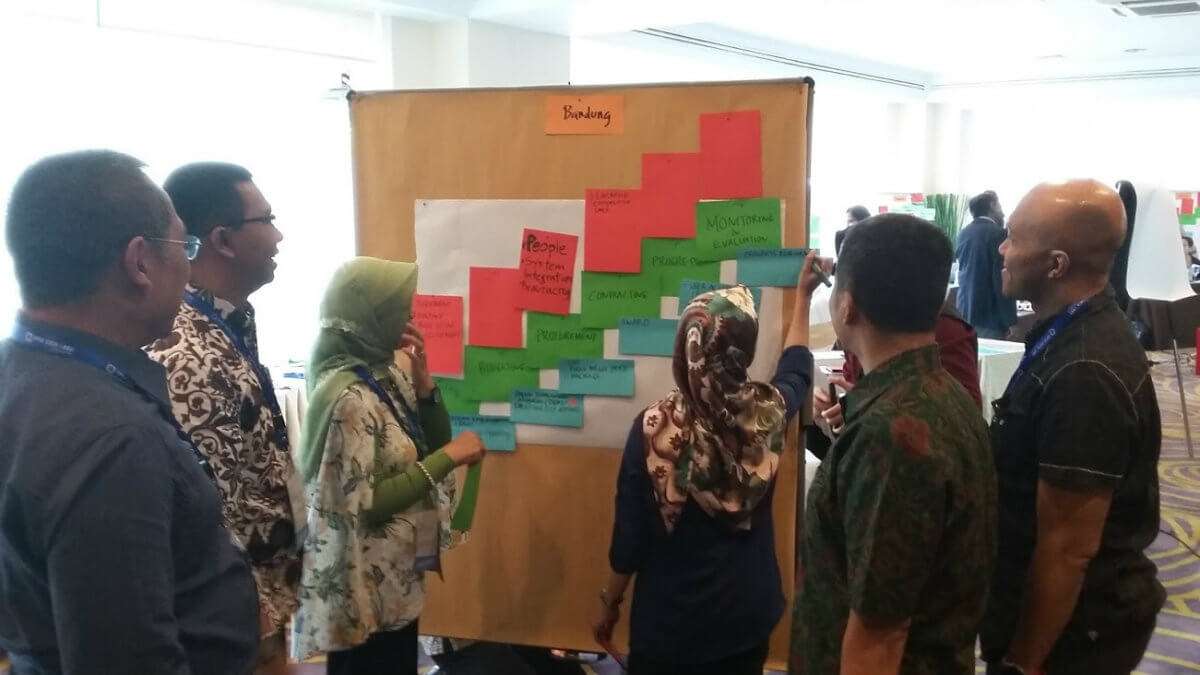This post, written by our Research and Policy Officer Ana Brandusescu, was originally published on the Open Data Labs Jakarta website.
Public contracting isn’t a topic people really talk about. It rarely makes headlines — but it’s important and it is exciting once you break it down. It’s on the roads we drive, in the schools we take our kids to, in the public services we use, it’s everywhere. That’s why having effective mechanisms to run these systems is key.
Setting the stage for open contracting
In August, the Web Foundation’s Open Data Lab Jakarta hosted a four-day “Open Contracting and Governance Workshop”, organised in partnership with the World Bank. Ten governments — Philippines, Thailand, Vietnam, Mongolia, Bhutan, Pakistan, Afghanistan, Bangladesh, Sri Lanka, and Indonesia — gathered in Jakarta, Indonesia to take part. Why? To learn about how open procurement can improve public contracting — with lessons they can take and implement in their countries.
Open contracting is about making public procurement in government more transparent and accountable. This means not only disclosing data but also standardising it: making sure that data is reusable, machine-readable and published in an open format according to the framework of the Open Contracting Data Standard. When we can hold governments accountable for how public money is spent, we get more effective investments in public services.
Identifying the snakes and ladders
In one of the workshop sessions, participants were asked to illustrate the contracting process in their country, identifying the various challenges (snakes) that hinder their progress as they try to climb the ladders towards better public contracting processes. They mapped out their contracting cycles, using green cards to show the steps of the contracting process, red cards for the snakes, blue cards to show the data that is produced, and stars to show what data is shared with the public as open data.
These maps helped participants to think about open contracting ‘interventions’ — ideas for how they would improve public contracting in their countries. Participants were asked to select an intervention for a specific open contracting action and explain how it would improve contracting in their countries, why it was needed and, most importantly, how it would enable long-term institutional change in government.
Finding a way around the snakes
This was not an easy process or activity. Governments, such as the city of Bandung in Indonesia, have already begun open contracting implementation by adopting the Open Contracting Data Standard and are even running an interactive open contracting data visualisation portal to analyse contracting data. Now they need to address the challenge of encouraging citizen participation and engagement in the monitoring and evaluation stage of the contracting process.
Meanwhile, newcomers to open contracting such as Bhutan, are still in the process of moving from a paper-based system to e-procurement. Here, the necessary open contracting intervention starts with the policy process by supporting legal reform and drafting a procurement act. The absence of such an act was identified as one of the main challenges in the planning phase of the contracting cycle. Implementing open contracting values within policy, law and the procurement act is a necessary foundation for open contracting.
Ladders to climb to better public contracting
Participants shared lessons from their respective countries, focusing on how to overcome challenges and move forward with open contracting adoption and implementation. A number of key ingredients for effective public contracting emerged, including:
- An understanding of who the users are and a clear user value proposition.
- Strong sponsors within government that are able to provide sustained financing as well as being open to reform.
- Good governance to establish legitimacy by providing transparency and accountability.
- Strong partnerships with key actors across government, business and civil society.
- The need to improve existing systems, not only build new applications.
- A strong legal system that will support technical implementation throughout the adoption process.
- Incentives and capacity-building for use cases in the contracting process, such as value for money, anti-corruption measures against fraud, and monitoring service delivery.
At the end of the four days, the participants had many takeaways. One of these was an action planning document to inform colleagues back in their country about open contracting, what it could mean for their government and how to avoid the snakes and climb the ladders going forward.
Visit the Open Data Lab Jakarta website to learn more about the Lab’s projects, and follow @ODLabJkt on Twitter for regular update.
You can follow Ana on Twitter at @anabmap. For Web Foundation updates, follow us at @webfoundation and sign up to receive our email newsletters.
